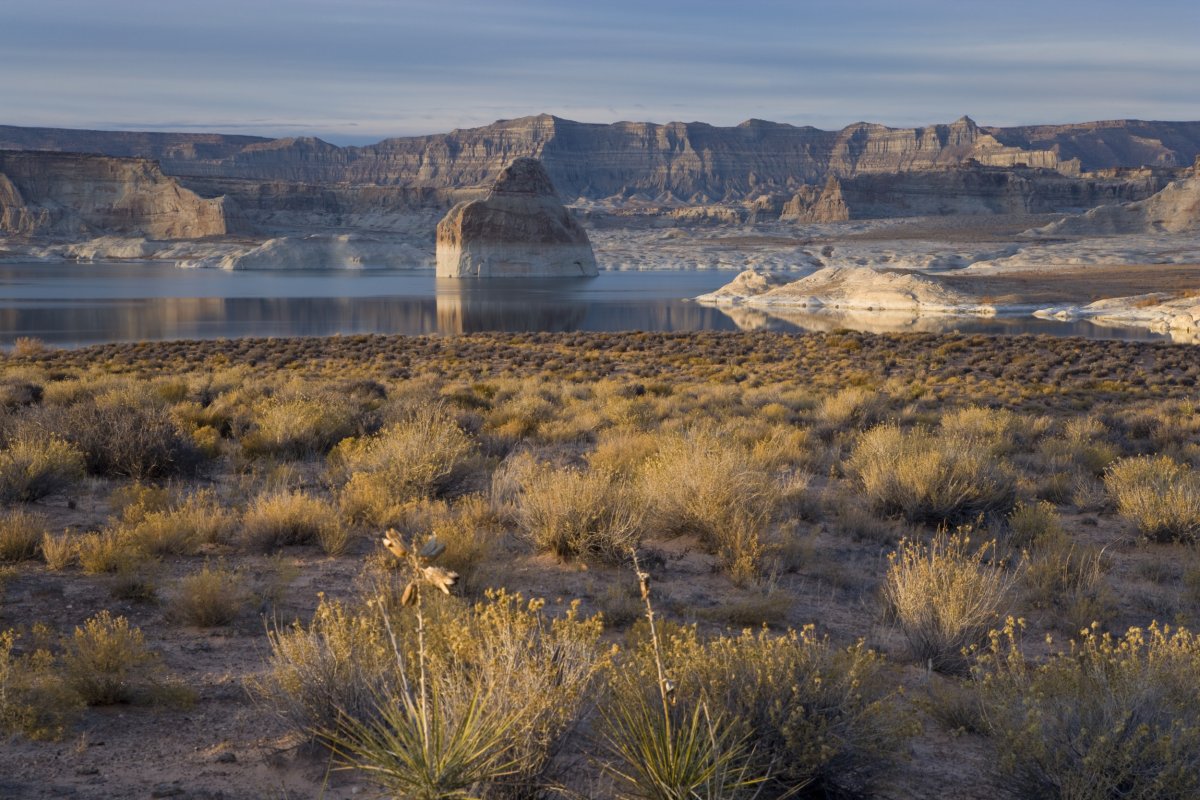Lake Powell Water Levels Lead to 'Ecological Rebirth'
This environmental crisis is revealing an unexpected ecological benefit—the return of native plant communities in areas exposed by the shrinking reservoir.

Quoting the article below, "The retreat of Lake Powell is providing a rare glimpse of the resilience of native ecosystems, which are thriving in the absence of the invasive species that have proliferated elsewhere along the Colorado River."
NOTE: this article was originally published to NewsWeek.com on October 28, 2024. It was written by Tom Howarth.
The Colorado River drought has hit Lake Powell hard, with water levels dropping to record lows in the past few years.
But this environmental crisis is revealing an unexpected ecological benefit—the return of native plant communities in areas exposed by the shrinking reservoir.
"Nature's doing a pretty good job by itself of coming back and establishing thriving ecosystems," Seth Arens, an ecologist conducting research in the newly exposed reaches of Utah's Glen Canyon, told NPR.
As the reservoir's water levels have plummeted, vast swathes of land that were submerged for decades have reemerged. Instead of being overrun by invasive weeds, these areas are being colonized by the same native plant species that thrived there before the canyon was flooded to create Lake Powell in the 1960s and 70s.

As of October 28, 2024, water levels have rebounded somewhat since the historic lows of 2022 to 3,577 feet above mean sea level (MSL). But that is still 123 feet below the lake being full.
"Fortunately, a couple of years ago we had an incredible snowpack that brought Lake Powell up by about 65 feet," Gene Shawcroft, Colorado River commissioner of Utah, told Newsweek.
"Today, it's a little over 37 percent full, which is up about a little over 4 feet from where it was a year ago."
But while levels are going up, it's unclear whether they'll ever reach the historical levels of the 20th century, leaving plenty of room for plucky plant species to flourish.
This "ecological rebirth," as Zak Podmore, a journalist and author of a book on Lake Powell's future, said on NPR, is happening without any human intervention, undoing some of the damage caused by the creation of the massive reservoir.
Researchers like Arens are carefully documenting the reappearance of native plants like Baccharis salicifolia—otherwise known as mule fat—producing the first comprehensive data on the newly exposed ecosystems.
Mule fat is a native shrub that can grow over 12 feet tall. It's considered a common and secure species, but is listed as imperiled in Utah—where most of Lake Powell is—and critically imperiled in Texas, according to the U.S. Forest Service.
"One of the things that is kind of astonishing about natural environments, almost regardless of where you are, is how quickly they can recover if they are able to," Sara Dant, a retired professor who studies the history of politics in the environment, told NPR.
However, the future of these native plant communities remains uncertain. As policymakers work on new rules for managing the shrinking Colorado River, they will have to grapple with the question of whether to let Lake Powell's water levels rise again, potentially drowning the restored habitats.
"We have to be careful of our hubris in, you know, and I'm using air quotes here, 'managing nature' because you can cooperate with nature, but nature finds a way," Dant said.
For now, the retreat of Lake Powell is providing a rare glimpse of the resilience of native ecosystems, which are thriving in the absence of the invasive species that have proliferated elsewhere along the Colorado River.
